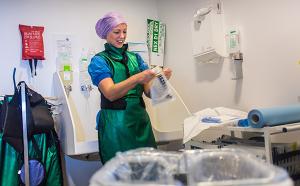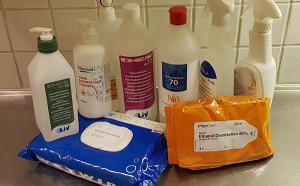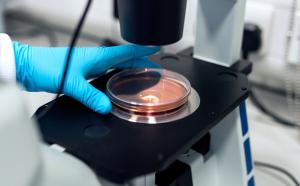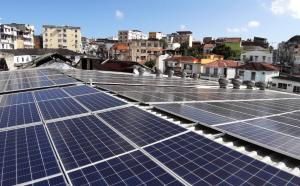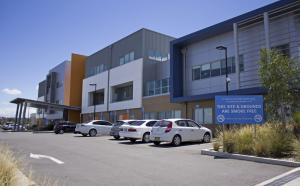Inhalational anaesthesic agents are potent greenhouse gases, contributing at least 0.6% of health care’s global climate impact. One of the most commonly used inhaled anaesthetic drugs is desflurane, which also has the highest global warming potential and CO2 equivalence.
In early 2020, a small group of consultant anaesthetists at Fiona Stanley Fremantle Hospitals Group (FSFHG) in Western Australia, lead an education campaign to highlight the greenhouse gas contribution of desflurane, with the aim of changing practice through consensus within the department. Current and continual data were obtained to understand the usage of desflurane within the organisation and to provide feedback as the action plan was implemented.
The early focus on education and data meant the majority of staff supported discontinuing the ordering of desflurane altogether, which was decided in a departmental vote. All remaining stock was to be used but no further stock would be ordered.
“To initiate such a significant change it's really important to educate widely and speak to all staff: clinicians, anaesthetic technicians, nurses, pharmacy to get everyone on board with the idea,” explains Dr. Adam Crossley, consultant anaesthetist at Fiona Stanley Fremantle Hospitals Group.
“There are plenty of people who still aren’t aware of the environmental impact of anaesthesia, or of healthcare in general. It is vital that we continue to spread the message along with simple but highly effective alterations in practice, like ditching desflurane”, he adds.
Eliminating the use of desflurane at FSFHG in 2020 has resulted in a CO2e reduction from 34,554 kg per month to zero. By January 2022, savings amounted to $10,000 per month.
Read the complete case study on GGHH Connect
July 23, 2025
March 10, 2025
February 06, 2025
July 30, 2024
June 27, 2024
May 28, 2024
February 21, 2024
October 04, 2023
September 20, 2023
September 06, 2023
August 30, 2023
August 16, 2023
August 23, 2023
August 09, 2023
July 26, 2023
June 28, 2023
June 21, 2023
June 14, 2023
May 31, 2023
May 17, 2023
May 03, 2023
April 19, 2023
March 08, 2023
February 23, 2023
February 14, 2023
February 01, 2023
January 18, 2023
January 05, 2023
December 13, 2022
November 30, 2022
November 16, 2022
October 19, 2022
October 05, 2022
September 29, 2022
August 10, 2022
May 31, 2022
April 11, 2022
January 13, 2022
January 06, 2022
November 05, 2020
October 14, 2020










